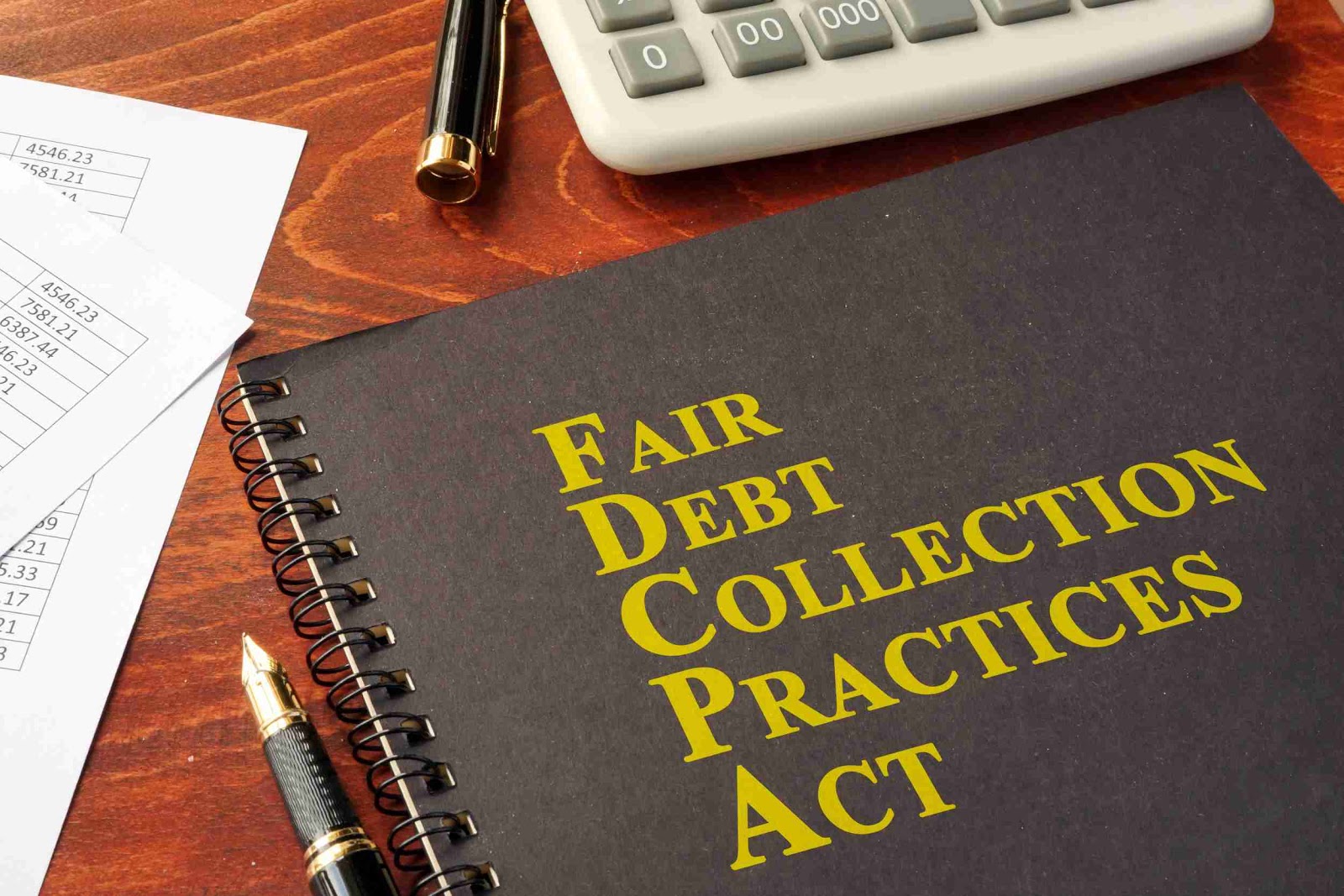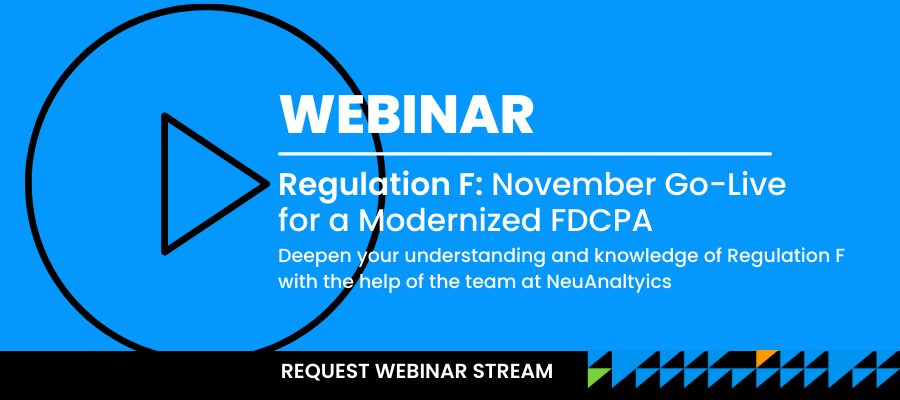Fleetwood Mac’s Rumours dominated the airwaves, while the Concorde jet dominated the skies, and Voyager 1 dominated the stars. It was 1977 – the same year President Jimmy Carter signed the Fair Debt Collections Practices Act into law. Last Friday, forty-three years later, the Consumer Financial Protection Bureau issued its long-anticipated Regulation F, the first complementary rulemaking under the FDCPA.
For the first time in decades, the industry finally has clarification of some of the most confounding parts of the FDCPA that lead to uncertainty, legal challenges, and a whole lot of training for the credit and collections ecosystem. Unfortunately, for as much as Regulation F provided additional clarity for certain aspects, the CFPB also declined to take a few positions that would’ve provided further guidance in a couple specific areas, although some additional rulemaking in the future might do just that.

What is Regulation F and How Does it Complement the FDCPA?
As an executive branch administrative agency, the CFPB has no inherent ability to make legal rules – that is the job of the legislature. In 2010, Congress granted the CFPB the power to make additional rules by virtue of the Wall Street Reform and Consumer Protection Act. Ten years later, after years of research, work with consumers and industry professionals, and reviewing public feedback, the CFPB published Regulation F. These debt collection rules do not change the FDCPA in any way, but rather are intended to clarify and explain parts of the FDCPA. The format itself is somewhat novel, in that Regulation F closely tracks with the language of the FDCPA, rather than a disconnected set of rules.
For example, here is the original FDCPA:
… a debt collector may not communicate with a consumer in connection with the collection of any debt (1) at any unusual time or place or a time or place known or which should be known to be inconvenient to the consumer. In the absence of knowledge of circumstances to the contrary, a debt collector shall assume that the convenient time for communicating with a consumer is after 8 o’clock antemeridian and before 9 o’clock postmeridian, local time at the consumer’s location …
And here is Regulation F:
… a debt collector must not communicate or attempt to communicate with a consumer in connection with the collection of any debt (i) At any unusual time, or at a time that the debt collector knows or should know is inconvenient to the consumer. In the absence of the debt collector’s knowledge of circumstances to the contrary, a time before 8:00 a.m. and after 9:00 p.m. local time at the consumer’s location is inconvenient …
The CFPB did not restate the entire FDCPA, so reference to the original statute is still required. For example, Regulation F does not address the legal venue for where a debt collector can bring a lawsuit, as the FDCPA and subsequent case law have well-developed understanding of that concept so rule-making is unnecessary.
What Does Regulation F Clarify for Debt Collectors?
This is a bit oversimplified, but the CFPB’s rulemaking is focused on three main areas:
-
Consumer contact
-
Records retention
-
State opt-outs
The first area, consumer contact, is the most substantial part of Regulation F. For years, we’ve known the times of day when collections calls can be made, but no guidance on what calling frequency constitutes harassment, and case law has been all over the place. Regulation F now provides the presumption that it’s okay to make as many as seven calls in seven days, and that a collector must wait seven days before contacting a consumer after a successful contact. Additionally, we have some clarification that unconnected calls don’t count towards the calling frequency standard, nor do “limited content” voicemails, which permit a debt collector to leave a message with very specific information.We also know more about using media other than a phone, as Regulation F clarifies that text messaging and email are acceptable contact methods, if the consumer consents and the debt collector does some specified due diligence. Permitting electronic messaging is a wonderful policy decision by the CFPB that will encourage creditors and their customers to communicate in meaningful ways and on the customer’s terms.
The records retention requirements are fairly straight-forward and the CFPB expressly says these are in place to level the playing field for collection agencies and regulators. By imposing records-keeping requirements, collection agencies will essentially be required to maintain evidence for regulators. This should be no problem for the vast majority of agencies that follow the laws and, more importantly, do their work in an ethical way. For those agencies that operate outside the law, their failure to maintain these records will be, in and of itself, a violation of the FDCPA.
The state opt-outs are a bit technical, but essentially boil down to the concept that if state law provides consumers the same protections as the FDCPA (and presumably better protections as well), that state can opt out of the FDCPA. Regulation F states the procedure for how a state can apply for this kind of exemption.
What is Not Clarified by Regulation F?
We know that Regulation F certainly covers activities by debt collectors, which is defined as an entity who’s primary business is recovering debt that is owed to someone other than the collection agency. The CFPB expressly declined to apply these rules to original creditors (and presumably debt buyers as well per the Henson v. Santander case), although note that first-party collectors can be subject to Regulation F compliance if they fit one of a few exceptions. However, the CFPB also declined to state whether a creditor might be liable under section 1031 as an unfair, deceptive or abusive act or practice if that creditor broke these rules. Unfortunately, that leaves some uncertainty about how the CFPB might approach Regulation F enforcement against a first-party collector. The CFPB also declined to expressly give debt collectors a safe harbor for attorney involvement in a collection lawsuit, and so presumably will continue to apply the “meaningful involvement” standard it used in some enforcement actions.
What's Next for the CFPB and the Credit Industry?
The CFPB left a few blank spots for some future rulemaking, stating that they intend to supplement this rule with additional g-notice guidance. We saw that rule finalized in December 2020. Additionally, the CFPB may revisit the first-party space as well, or at least has left the door open to that possibility in the future.
This post is not intended to be a thorough recitation of Regulation F, nor is it intended to be legal advice. If you need legal advice, you should seek your own legal counsel. Since the CFBP’s inception, the NeuAnalytics team has collaborated with the agency and CFPB regulated entities to work on increasing credit market efficiency in a responsible, consumer-focused way, and Regulation F is a great step in that direction. We are passionate about these efforts and would love to start a conversation with you about these rules and how our Integrated Support Platform can help your organization stay ahead of the compliance game.

